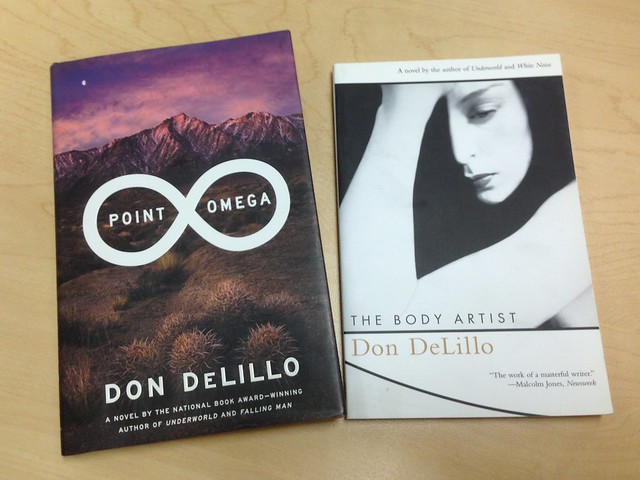A few weeks ago, as a favor for a friend buying a computer, I did something unusual.
I went inside a mall.
My formative late teen age years were spent at Security Square Mall in Baltimore (named for its proximity to the headquarters of the Social Security Administration). My last job before leaving Arizona was selling cameras at Ritz in Westview Mall. Both these malls are settings for the story being told in Serial Podcast. As a kid I remember going to maybe among the oldest mall Mondawmin Mall, built in 1956 by a group led by James Rouse, who went on to build Baltimore’s Inner Harbor and Columbia, the planned city between Baltimore and Washington DC.
Since then, I go very rarely.
But they are not bad places. On this recent visit, an empty store in Sahali Mall was the location for a used book sale organized by the Kamloops Symphony.
There I picked up two slim novels by Don Delillo.

A few years ago I read Libra and perhaps White Noise, and really relished his writing style.
At 126 pages The Body Artist and at 116 Point Omega ought to be quick reads. The generally were, but that does not mean easy reads.
I am not about to give a literary analysis; there is thus place called “The Internet” where you can find a lot of these.
But some interesting similarities:
- Both stories play around with our concept of time. The opening chapter of the Body Artist is almost an excruciatingly detailed act by act of the ordinary morning routine of Lauren and Rey. In Point Omega, Richard Elster goes to the desert (some reviewers call it Arizona, but by description and narrative this is definitely in California, near Anza-Borrego) to experience slow desert time, and talks much about geological time. The opening and closing chapters take place in the art exhibit where the Man With No Name absorbs an art exhibit that slows down the movie Psycho to play over a 24 hour period.
Time is the only narrative that matters. It stretches events and makes it possible for us to suffer and come out of it and see death happen and come out of it. But not for him. He is in another structure, another culture, where time is something like itself, sheer and bare, empty of shelter.
— The Body Artist p94
He’d exchanged all that for space and time. These were things he seemed to absorb through his pores. There were the distances that enfolded every feature of the landscape and there was the force of geologic time, out there somewhere, the string grids of excavators searching for weathered bone.
— Point Omega p 19
I have to admit the setting in Point Omega speaks to me because of my long stint living in Arizona.
- Both stories involve people dealing with incredible personal loss.
- Both stories have characters that seem rather under developed, or semi transparent. Lauren narrates in a sparse manner that jumps around, but also repeats motifs like always touching the newel (the stairway post). I wonder too about the repeated description of birds, they have a meaning too (life fleeting??) In Point Omega, narrator Jim Finley spills out his own story more in small doses. Both stories have almost ghostly or mystery ones- Mr Tuttle may not be real in The Body Artist, and Jessica is an enigma mostly described by other people.
- Both stories weave narratives that bob and weave a plot line, and are only somewhat wrapped together in the last chapter. And its never a neat package.
- Both stories involve people invested in older media forms– the tape recorder of The Body Artist and film in Point Omega
There’s probably more I could pick out; these are stories that do not end neatly. They leave you trying to weave through it and find the layers of meaning. I am sure people may hate them because it’s not the neat Freytag pyramid of story shape.
Thank you for the pointers, dog, and the reflections. I haven’t read either of those.
Don’t forget Reisterstown rd plaza where Dad helped build in his bricklaying days. You should tell how you got fired from Ritz camera haha.